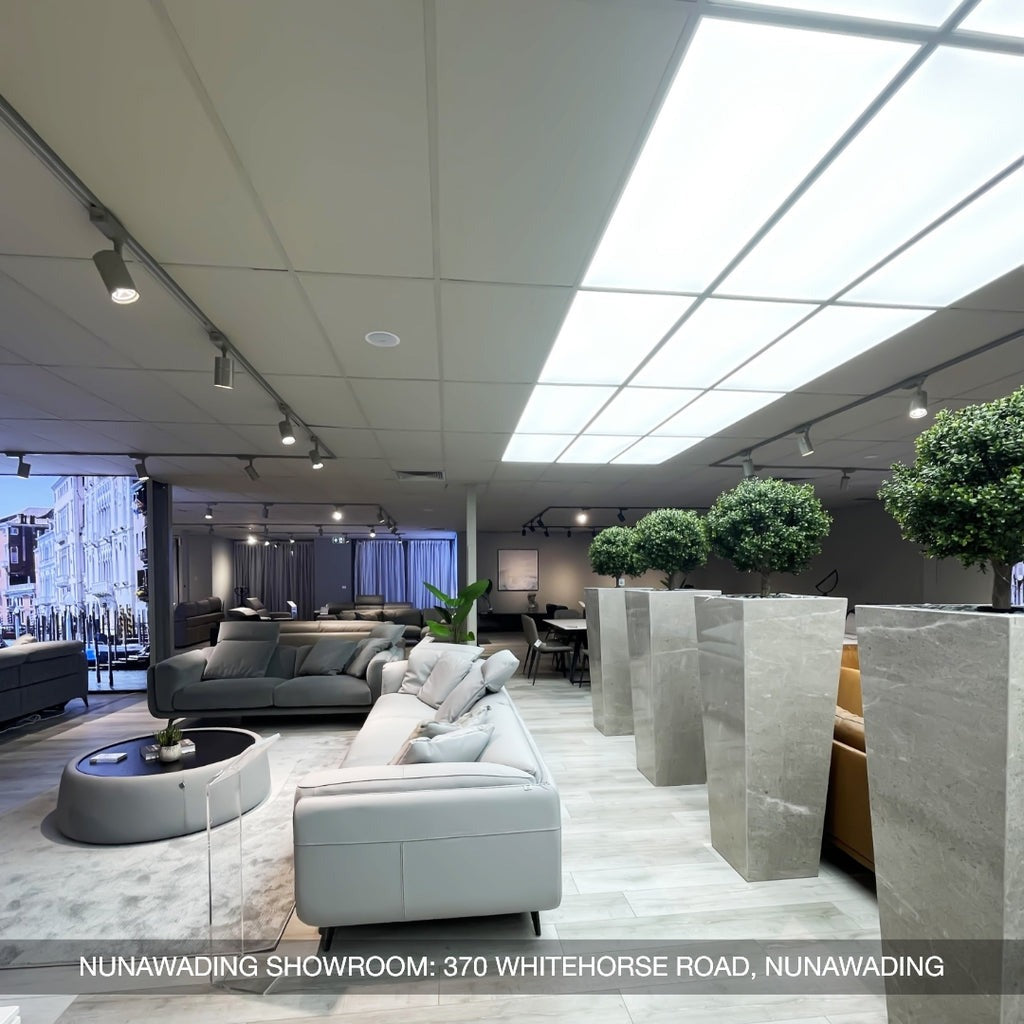Transforming your living spaces with the art of Feng Shui offers a unique and holistic approach to harmonizing your surroundings. These 10 Feng Shui living room tips will guide you in creating a balanced, inviting, and energy-enhanced environment.
From the best Feng Shui colors for your living room to essential Feng Shui living room rules, this journey explores the principles that can transform your living area into a sanctuary of positive energy and tranquility. Discover the power of Feng Shui to optimize your living space for improved well-being and enhanced connections within your home.
Understanding Feng Shui: Basic Concepts
The Essence of Chi: Energy and Flow in Your Living Room
The Essence of Chi: Energy and Flow in Your Living Room
Understanding the core principles of Feng Shui is essential for creating harmony and balance in your living room. Central to Feng Shui living room tips is the concept of chi, the life force energy that flows through all spaces. In your living room, the proper circulation of chi is crucial for a positive and harmonious environment. The arrangement of furniture, lighting, and colors all play a role in facilitating the smooth flow of chi.
The Role of the Five Elements in Feng Shui Decor
Another fundamental aspect of Feng Shui is the use of the five elements - wood, fire, earth, metal, and water. These elements represent various aspects of life and can be harnessed through decor to create equilibrium in your living space. For example, wooden furniture brings in the energy of growth and vitality, while incorporating the fire element through lighting or colors can add passion and energy. By understanding the interplay of these elements, you can align your living room with the desired energy and atmosphere.

The Bagua: Feng Shui's Energy Map for Home Harmony
The Bagua, Feng Shui's energy map, is an invaluable tool for creating harmony in your living room. This map divides the space into different areas, each associated with a specific aspect of life. By using the Bagua, you can identify areas of your living room that may require attention and enhancement.
Whether you seek to boost your career, improve relationships, or enhance creativity, the Bagua offers a clear path for how to Feng Shui your living room to achieve your goals. By incorporating these core concepts of chi, the five elements, and the Bagua, you can transform your living room into a space of balance, positive energy, and enhanced well-being.
Core Feng Shui Living Room Principles
Adapting Feng Shui for Various Room Sizes and Shapes
Adapting Feng Shui for Various Room Sizes and Shapes
Feng Shui living room tips are not one-size-fits-all; they can be adapted to different room sizes and shapes. In some homes, living rooms come in various dimensions and configurations, but the fundamental principles of Feng Shui can be applied effectively. For smaller living rooms, it's essential to maximize space and choose furniture that aligns with the room's dimensions.

In larger living rooms, the challenge may be to create an intimate atmosphere while ensuring proper energy flow. Irrespective of size, one common thread in Feng Shui living room location is the positioning of key elements, such as the sofa and the placement in relation to the door, to create a balanced and harmonious space.
Dealing with Open Floor Plans and Multi-Functional Living Rooms
Open floor plans and multi-functional living rooms have become increasingly popular, and adapting Feng Shui to these layouts is essential. In such spaces, the strategic use of furniture and decor helps define different functional areas while maintaining a sense of unity.
Using screens or room dividers can help designate zones and encourage the flow of energy throughout the open floor plan. Additionally, the positioning of key living room elements, such as the TV or fireplace, should support multiple functions without disrupting the overall energy flow.
Positioning of Key Living Room Elements for Optimal Energy Flow
Positioning key living room elements is critical in optimizing energy flow. For instance, the sofa's location, often considered the heart of the living room, should allow for a clear view of the door while also providing a sense of security and comfort. Likewise, arranging seating to facilitate conversation and avoid obstructing pathways is vital. Applying Feng Shui principles to these key elements ensures that energy flows smoothly, creating a living room that is not only visually appealing but also conducive to well-being and positive chi.

Positioning key living room elements with consideration for energy flow is an important aspect of both interior design and Feng Shui principles.
Feng Shui Living Room Layout Ideas
Prioritize Clutter-Free Spaces for Chi Enhancement
Prioritize Clutter-Free Spaces for Chi Enhancement
Set up a small living room in accordance with Feng Shui principles can be a rewarding endeavor, as it transforms limited space into an oasis of positive energy and balance. The first rule in the list of Feng Shui living room layout ideas is to prioritize clutter-free spaces.
In a smaller living room, clutter can be especially detrimental to chi enhancement. Keep your furnishings and decor minimal and well-organized to allow energy to flow freely and prevent the room from feeling cramped. Less clutter means more room for chi to circulate, promoting harmony and well-being.
Furniture Positioning for Positive Flow
Furniture positioning is equally critical for creating a positive flow of energy. In a small living room, select appropriately sized furniture that fits the space without overwhelming it. Opt for pieces that have clean lines and multifunctional qualities to make the most of the room's potential. Proper placement of furniture, such as sofas and chairs, should encourage conversation and provide a clear view of the entrance, allowing you to welcome positive energy while feeling secure.

In compact living spaces, it is imperative to choose furnishings that harmonize with the room's proportions, maintaining a balance between function and comfort without overcrowding.
Best Feng Shui Colours For Living Room: Balancing Vibrancy and Tranquility
Color plays a significant role in Feng Shui, and it's vital to balance vibrancy and tranquility in a small living room. Lighter shades, like soft blues or pale greens, can create a sense of openness and airiness, while warmer colors like gentle yellows and creamy neutrals can bring comfort and warmth to the space. Integrate these colors in your decor and accessories to maintain a harmonious atmosphere.
Art and Decor Placement: Symbols of Prosperity and Positivity
When it comes to art and decor placement, select items that symbolize prosperity and positivity. Art that represents growth, abundance, and good fortune is particularly auspicious in Feng Shui. Position these pieces strategically in your small living room to enhance the room's energy and attract positivity.

Harnessing Natural Light: Welcoming Sun's Energy
Harnessing natural light is another essential element of Feng Shui living room design. Sunlight brings abundant positive energy, so ensure that your windows allow as much natural light in as possible. Avoid heavy window treatments that block light and use light, sheer curtains to diffuse the sunshine gently.

Mirrors in Feng Shui: Amplifying and Redirecting Chi
Mirrors also play a significant role in Feng Shui, as they can amplify and redirect chi. In a small living room, placing mirrors strategically can create the illusion of more space and help chi circulate effectively. Position mirrors opposite windows to reflect the incoming natural light and spread positive energy throughout the room.
Element-Driven Decor: Using Wood, Water, Fire, Earth, and Metal
Elements such as wood, water, fire, earth, and metal are essential in Feng Shui design. In a small living room, element-driven decor can add both balance and vitality to the space. Integrate these elements through various decor items like wooden furniture, a small indoor fountain for a touch of water, or a vibrant piece of artwork symbolizing fire.
Strategic Plant Placement for Growth and Vitality
Strategic plant placement is another powerful technique to bring growth and vitality into your small living room. Lush, healthy plants not only purify the air but also introduce the vibrant energy of the wood element. Select plants with rounded leaves, which are considered especially auspicious in Feng Shui.

Choose plants with rounded leaves, as they hold particular significance in Feng Shui practices, and arrange them thoughtfully to maximize their positive influence.
Artificial Lighting: Types, Placement, and Effects
Artificial lighting plays a crucial role in Feng Shui as well. In a small living room, you can use various types of lighting, such as ambient, task, and accent lighting, to create a balanced and harmonious atmosphere. Properly placed lighting can uplift the energy of the room and enhance its overall appeal.
Integrating Soft Furnishings: Promote Comfort and Balance
Integrating soft furnishings is the final tip for a well-balanced and comfortable small living room. Use plush, comfortable cushions and rugs to promote relaxation and balance. These soft furnishings not only add to the aesthetic appeal of the room but also contribute to a sense of comfort and well-being.
Addressing Common Feng Shui Living Room Challenges
Navigating Obstacles and Sharp Corners for Smooth Energy Flow
Navigating Obstacles and Sharp Corners for Smooth Energy Flow
Addressing common Feng Shui living room challenges requires a thoughtful approach to navigate potential obstacles and sharp corners that can disrupt the smooth flow of energy. In luxury living room furniture setups, it's essential to choose furnishings with rounded edges to mitigate the negative effects of sharp corners, which can create what Feng Shui practitioners refer to as "Poison Arrows." These pointed edges can lead to stagnant energy and potentially even tension within the room. Opting for well-designed furniture can significantly enhance the energy flow in your space.
Handling Electronic Devices and Their Impact on Feng Shui
Electronic devices have become integral to modern living, but they can pose a challenge in maintaining the harmonious balance of Feng Shui. The electromagnetic fields generated by these devices can disrupt the room's energy flow. To counteract this, it's advisable to designate specific areas for electronic use and ensure that these spaces are not in the direct line of sight from the main seating area. Integrating soft furnishings or curtains can also help mitigate the impact of electronic devices.
Tips for Homes with Limited Space or Unique Architectures
For homes with limited space or unique architectural features, applying Feng Shui principles can be particularly challenging. In such cases, careful furniture arrangement and decor selection are key to optimizing the energy flow. Choose multi-functional luxury living room furniture that maximizes space while maintaining a sense of luxury and comfort. Additionally, consider incorporating mirrors strategically to create the illusion of more space and to redirect positive energy throughout the room.
Conclusion
These 10 Feng Shui living room tips can bring about a profound transformation in your living space, enhancing its energy and overall harmony. By understanding the fundamental principles of Feng Shui, such as the flow of chi, the balance of elements, and the importance of the Bagua, you can create a living room that nurtures both your physical and emotional well-being.
Whether you are designing feng shui dining room location or setting up a small living room or a more expansive area, these tips can guide you in creating a space that radiates positivity, tranquility, and balance, ultimately transforming your living room into a harmonious sanctuary for relaxation and social interaction.





